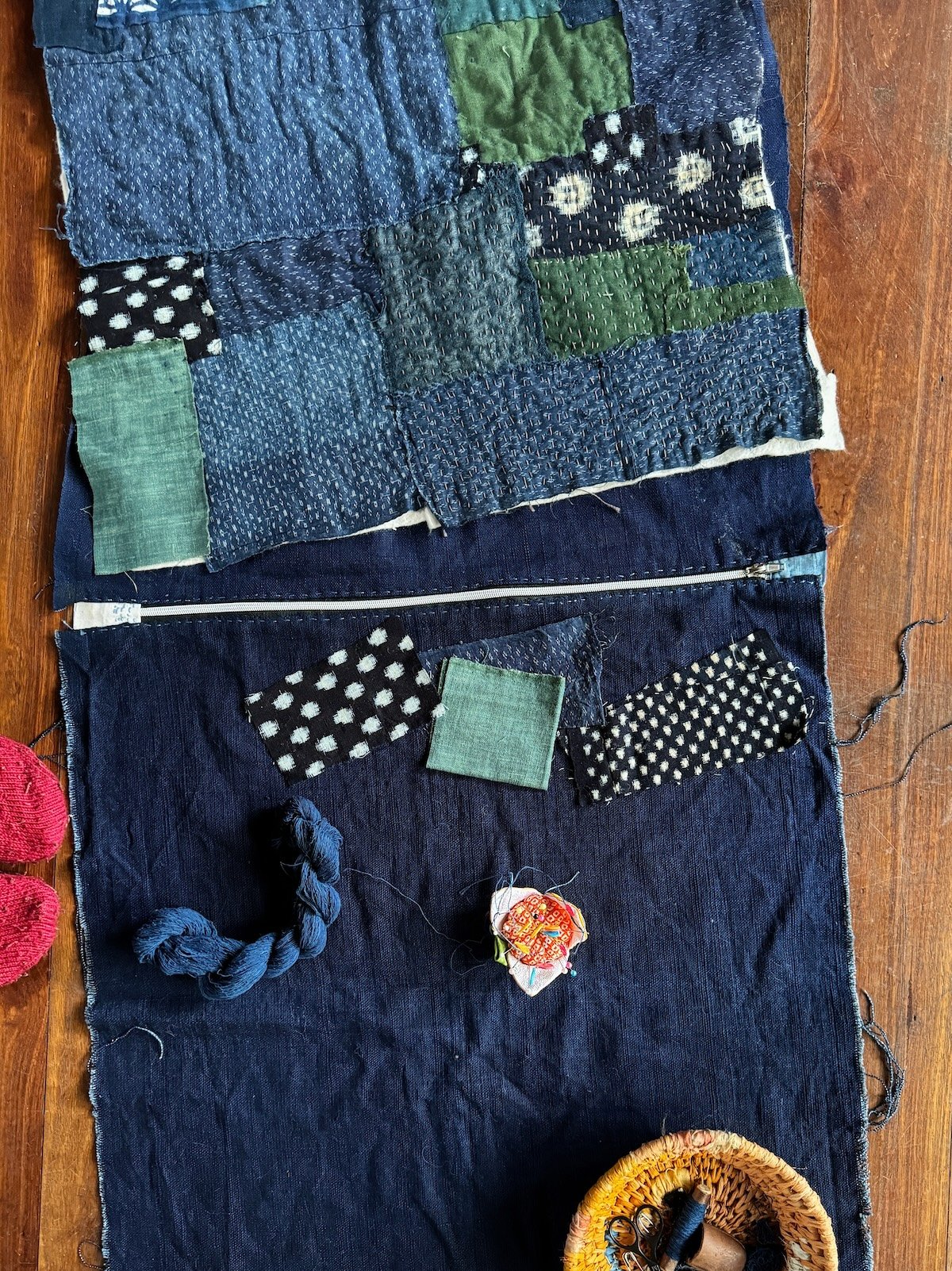some days of stitching & lying in bed
Over the past few weeks I’ve got into a little bit of a cushion-making flurry. Actually, I’ve only finished two cushions. But let me tell you that finishing two anythings in two weeks is actually very very amazing for me. Here’s the first cushion that I made - I love the spiderweb stitch so much and have some other little things I’m stitching on.
I hand stitched them both. The cushion fronts, then stitching in the zip and sewing up the back, to joining them together. It’s a very satisfying project. Apart from however long it might take for the actual design of the cushion cover - ie, whatever you put on the front - it only takes just over an hour to insert the zip and sew up your cushion cover.
That’s pretty good, isn’t it! All those little bits of fabric process pieces can be put towards something after all.
And, then what an excellent excuse to test them out! So, some lying around in bed too. Some of this is because it was raining, some because it was lazy school holidays, some because it seems like at least three out of five people in our home have some form of depression. Our mental health is not so great (I wrote a little about it here, if you’d like to read). Having some little bits of stitching, and then some little bits of lying down are quite important.
I brought these fabrics home from Japan last year. A lot of them are vintage kimonos, dyed with indigo. But I was told that the green pieces are a different plant. Unfortunately my non-existent Japanese couldn’t work out at all what the plant was called. And the woman at the market had no way to describing it to me. So, at this stage it’s a wonderful mystery. Except to say that isn’t that an absolutely beautiful green.
The fabrics are a combination of Shibori and block printed designs, as well as some solid colours.
I might have talked about this before on this blog, but I especially do in my online courses. But I think that if you’re not exactly sure where a piece is heading, and you’re working in an improv method, then it is much easier (especially when you’re new at the process) to start with a very limited colour and pattern palette. And consider using a combination of smaller and larger prints, alongside the plain block colours. This helps a lot for cohesion with your composition.
You might find these two blog posts helpful. This one about colour theory and this one with some ideas on starting with improv designs.
I got the momentum to make these cushion covers for the upcoming Making Zen online Retreat. I used to make cushion covers a long long time ago. In a previous iteration of our business. It was called Red Seed Studio in those days. We used to hand screen print all our own fabric, using mostly hemp. And then I sewed everything using my little domestic sewing machine. It’s lovely to do this project entirely by hand - from the cover design through to inserting the zipper. But of course, you can absolutely use your sewing machine as well.
For many years I was a bit afraid of inserting zips, as they always seemed like there would be a lot of messy mistake making. But once I overcame that fear, it was super easy. On both machine and by hand. I love that once you learn a new skill you can then take it into lots of other projects. I teach how to insert a zip into a pouch in this online course here.
Because I spent a little bit of time lying in bed this week, I thought I’d take some photos, and share them here. I’m telling myself to get in the frame more often. Not sure how long I’ll take this advice and keep doing this. But I’ve realised over the last little while that I don’t look as “bad” as I think I do. Looking at these photos I look lighter, brighter, less tired than I feel.
Do you get an impression in your head about what you look like, and then look in the mirror and you’re not as you think. I have that. But then, it also happens the opposite way… I think I look good and a mirror tells me something different. This is the story of my life and my brain at the moment. And that’s ok too. Peri-menopause, mental health, depression. Making, stitching, resting and being with the slow small moments of life are good.








